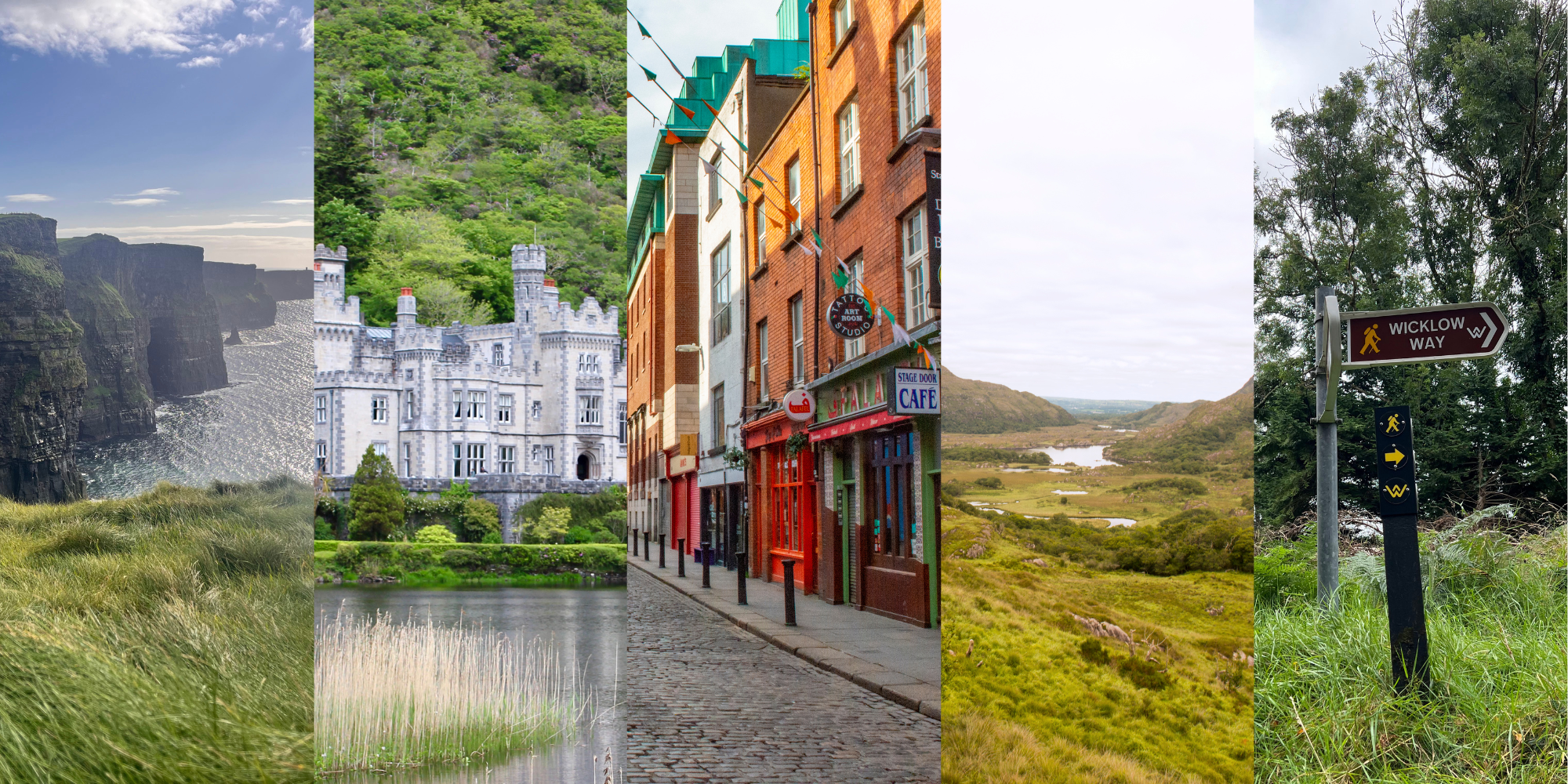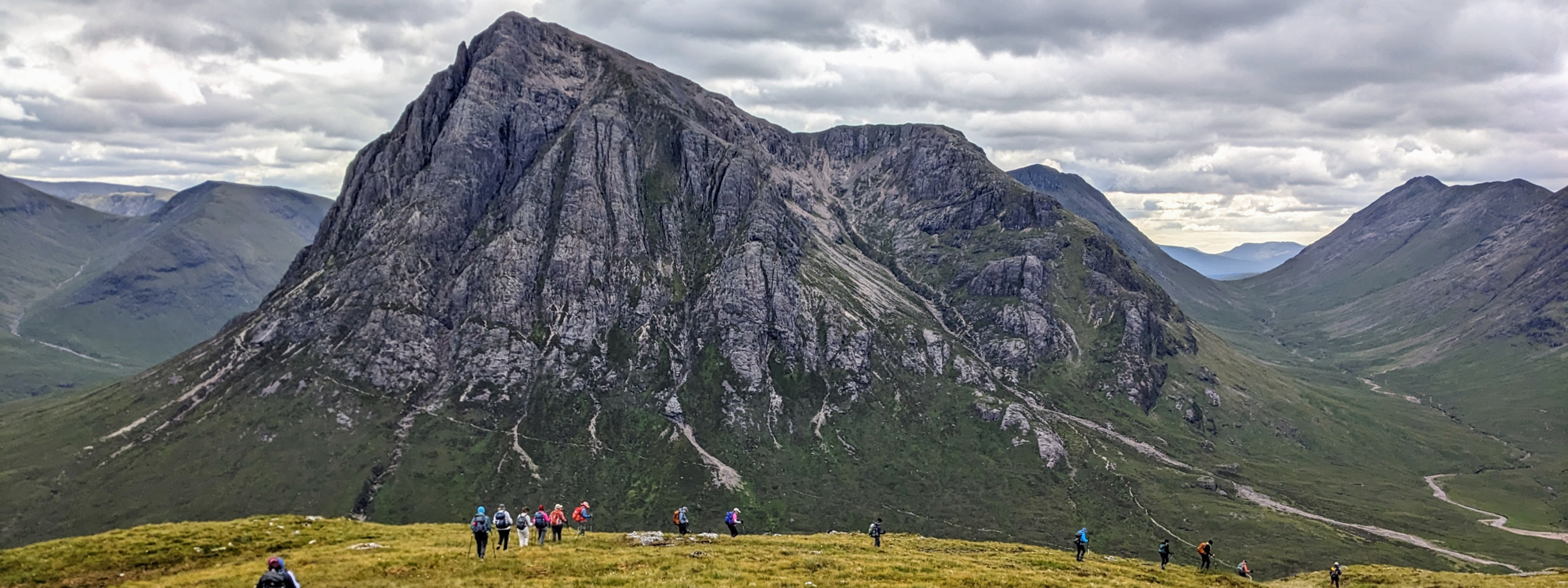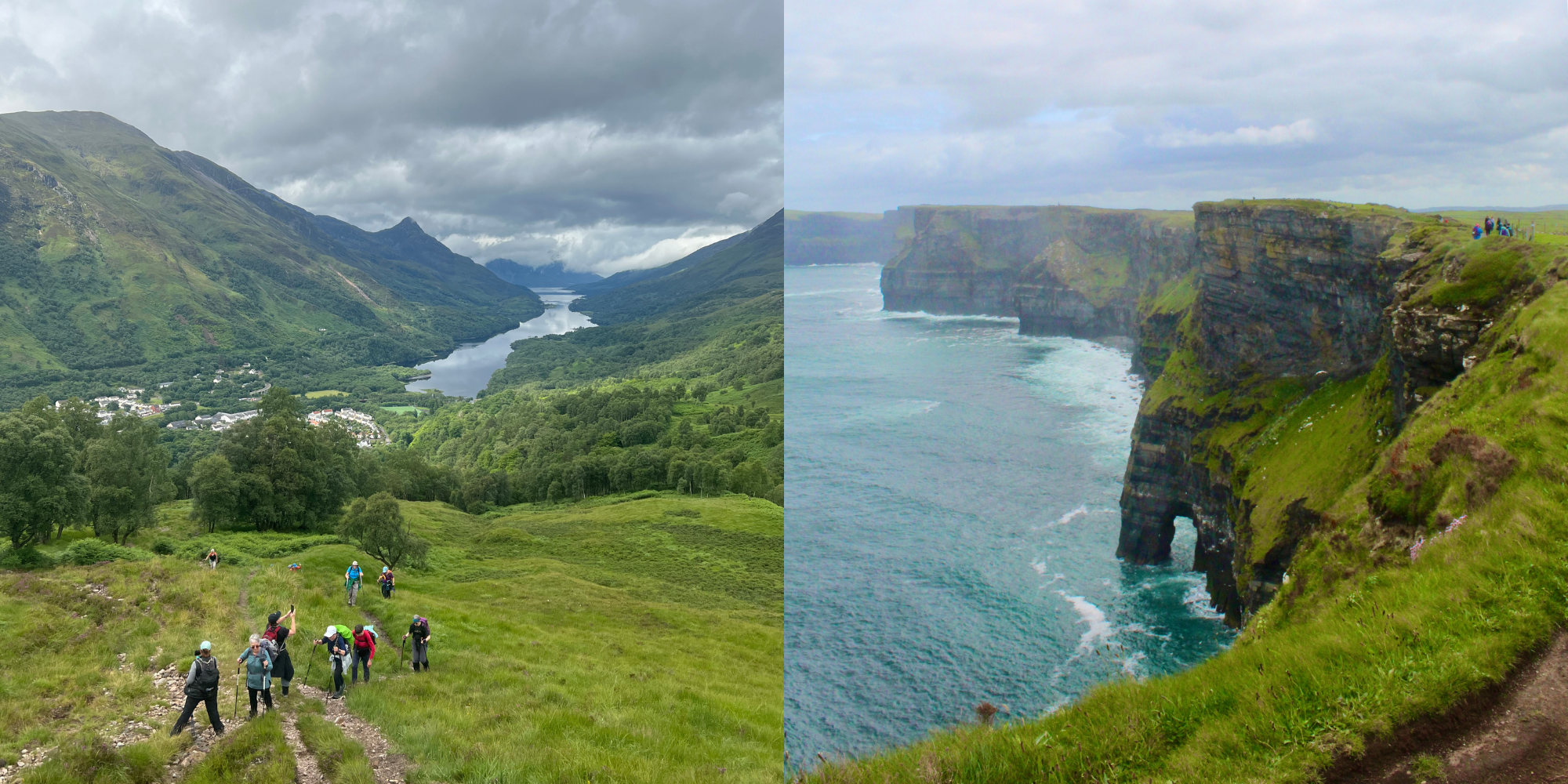Scotland and Ireland share a reputation for breathtaking beauty. With sweeping green landscapes, rugged coastlines, and towering cliffs steeped in history, these two Celtic destinations might seem like twins, separated by a narrow sea. However, a closer look reveals a world of differences that make each unique.
So, how do you choose the perfect spot for your next adventure? We will help you explore the distinctions between Scotland and Ireland—from their locations and scenery to their climates, cuisines, and histories—to help you confidently choose your next journey to one of these enchanting, welcoming destinations.
And no matter what, the locals in these countries will welcome you with open arms as they are known for their warm hospitality.
(Here's the best part: you can’t go wrong with either destination)
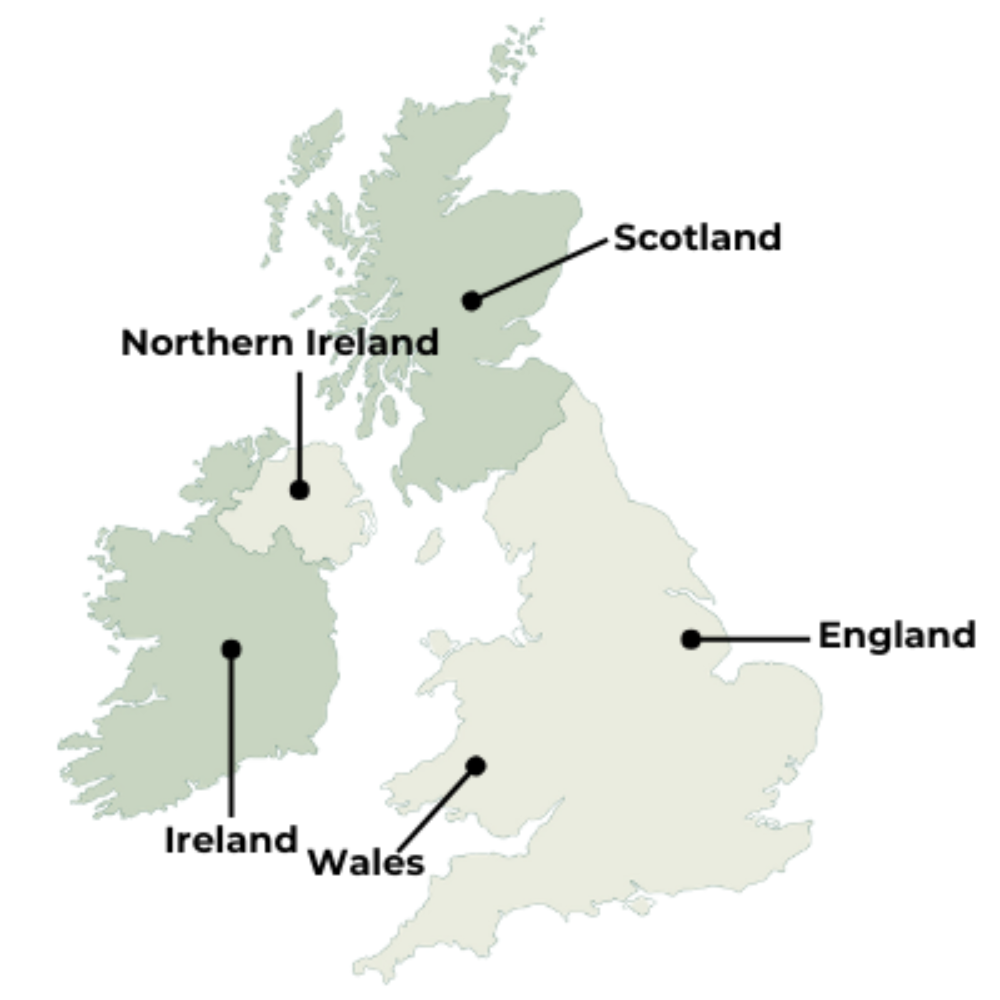
Where are Scotland and Ireland?
Let's understand their geographic proximity before discussing their differences. Both countries are located on the westernmost edge of Europe and are only 12 miles apart at their closest points. The North Channel separates them; you can see across to the other side on a clear day.
Scotland is entirely part of the United Kingdom and occupies the northern third of the island of Great Britain. It's bordered by England to the south and surrounded by the North Sea and the Atlantic Ocean.
On the other hand, Ireland is a separate island from the west of Great Britain. It is divided into the Republic of Ireland, an independent country, and Northern Ireland, part of the UK.
Both countries are home to major cities, like Edinburgh and Glasgow in Scotland and Dublin and Belfast in Ireland, which are well-connected by airports, making it easy to reach from major hubs worldwide.
Once there, both countries offer various public transportation options, including train networks, regional buses, and rental cars, which make exploring urban and rural areas easy.
Key Differences
Scenery
You can not go wrong with the scenery in either country; both are filled with breathtaking places and spectacular sights. With a few subtle similarities, each country is carved with distinct characteristics that make them stand out.
Both countries boast mountainous views; however, Scotland is home to significantly higher mountain peaks, especially in the Highlands region, with more rugged terrain.
Most of Scotland's landscape features dramatic glens, misty lochs, and windswept ridges. Amongst the landscape is an abundance of wildlife, such as red deer, golden eagles, and Highland cows, adding to its wild allure.
Ireland, also known as the Emerald Isle, has many rolling hills and valleys. The most iconic scenery of Ireland is its rocky outpoints, such as the popular Cliffs of Moher.
Its lush, green landscapes are often dotted with ancient stone walls, rivers, and quiet, picturesque villages. The island is home to a variety of wildlife, including red foxes, Irish hares, and seabirds.
In each country, you'll find much lush greenery, stunning coastlines, and numerous lakes and inland bodies of water.
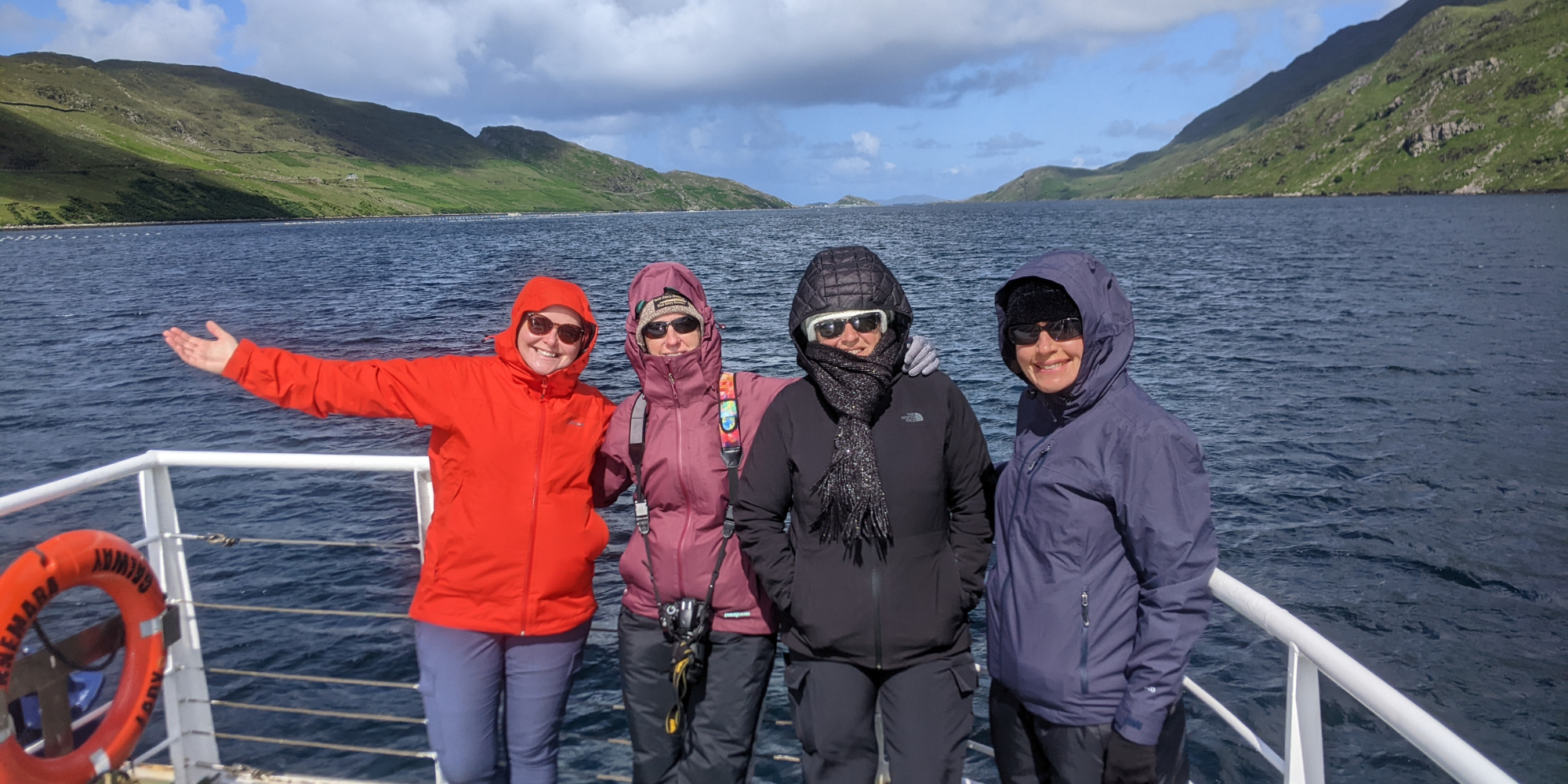
Climate
Scotland and Ireland share very similar climates, especially compared to some of the more tropical or desert regions we travel to. Generally, the temperatures are mild, with frequent rainfall. However, there are a few differences that are worth noting.
Scotland tends to be the country with greater changing weather patterns. The northern mountain regions experience colder winters, with snow likely in the Highlands. Scotland’s weather can be unpredictable, and it often experiences “our seasons in one day, with sunny skies one moment and rainfall just minutes after.
On the other hand, Ireland rarely receives snowfall and experiences a more consistent climate due to its proximity to the ocean. Each season sees relatively mild temperatures, never dipping too high or too low.
While Ireland has a reputation for persistent rain, Scotland is wetter annually.

Food Scene
Regarding food, Scotland and Ireland are celebrated for hearty, flavorful cuisines deeply rooted in tradition. Each country brings its unique character, relying heavily on fresh, local ingredients such as potatoes, seafood, and meat to create satisfying, comforting meals.
Scotland’s cuisine showcases a similar love for hearty fare, drawing inspiration from its seafood and wild game wealth. The country’s iconic dishes include haggis (a savory pudding), neeps (mashed root vegetables), and tatties (potatoes, often mashed or roasted).
Scotland is also world-famous for its Scotch whisky, a cultural cornerstone best experienced through tastings at its many renowned distilleries.
Ireland’s culinary scene is known for its classic comfort food, including hearty stews, soda bread, and abundant fresh seafood from its coastline.
Dishes are often enriched with creamy local butter, artisanal cheeses, and grass-fed beef, reflecting the island’s agricultural richness. Also, no visit to Ireland would be complete without sampling a pint of Guinness at a lively pub.
No matter which country you choose, you’ll find meals that warm the soul and leave you feeling comforted and satisfied.
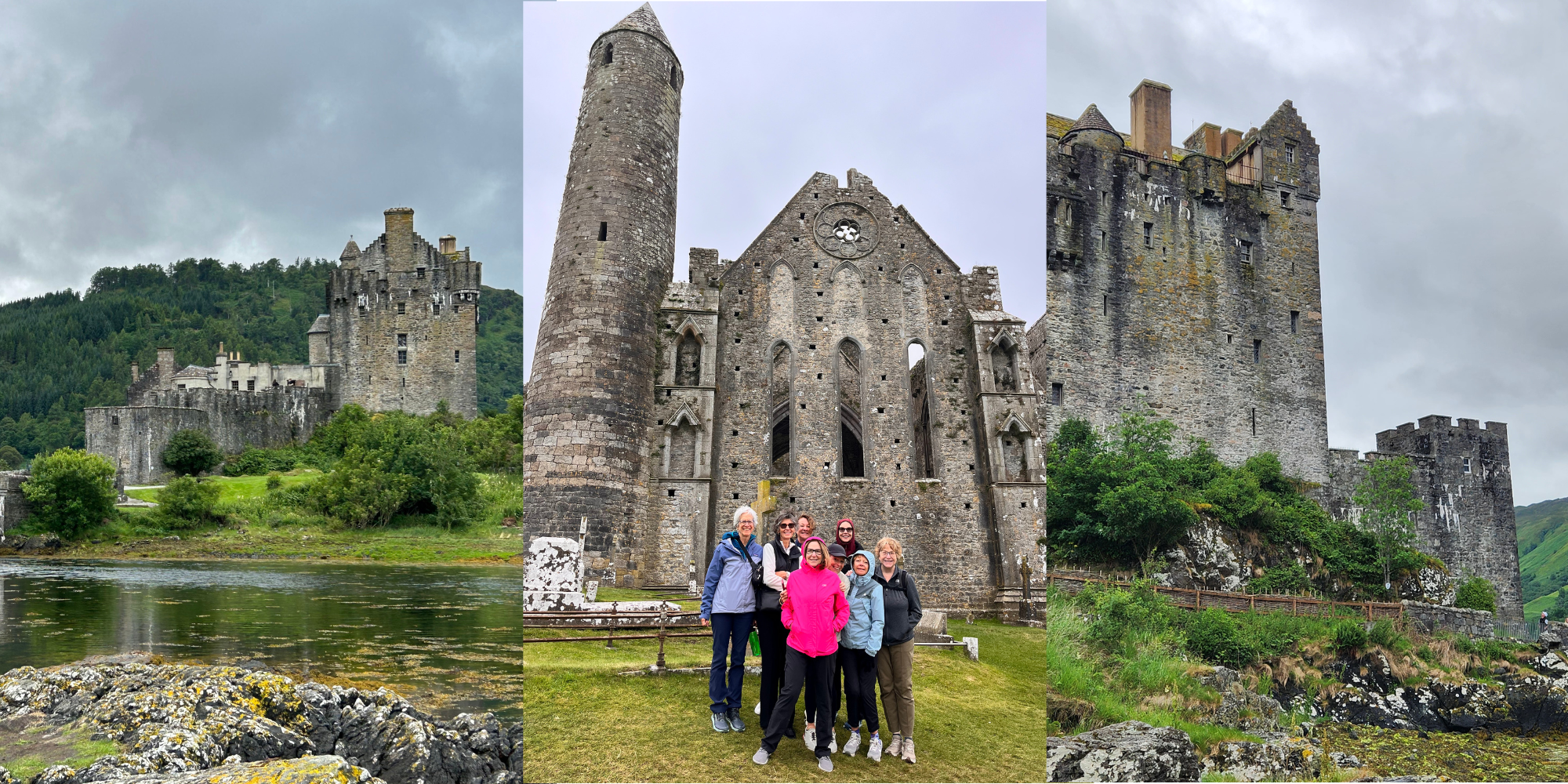
History
Scotland and Ireland offer rich histories and cultures, with dramatic landscapes that tell the stories of their past.
Scotland’s castles, such as Eilean Donan and Kilchurn, provide a glimpse into the country’s clan history. Many are set against the dramatic backdrops of mountains and lochs, making you feel like you're stepping into an enchanting tale. Scottish pubs also bring the culture to life, with the sounds of bagpipes and folk tunes filling the air.
Ireland’s 30,000 castles are steeped in Celtic history, with iconic sites like Blarney Castle and Kylemore Abbey surrounded by lush landscapes. Along with these historical sites, Ireland’s live traditional music in pubs adds to the cultural experience and is a must for any traveler.
Top Spots for Each Country
Top 5 in Scotland
- Scottish Highlands
- Isle of Skye
- Edinburgh
- Loch Lomond National Park
- Eilean Donan Castle
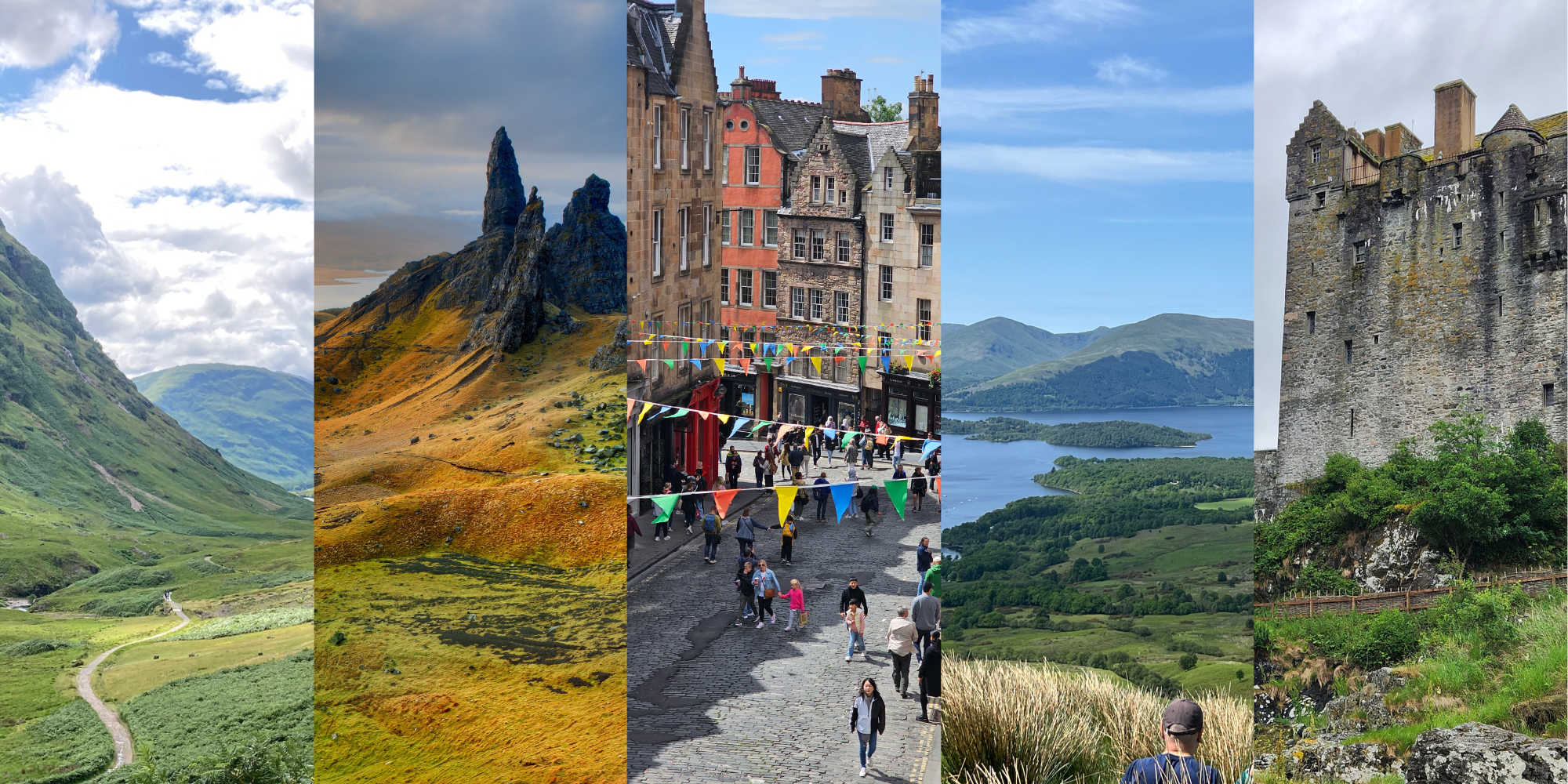
Top 5 in Ireland
- Cliffs of Moher
- Kylemore Abbey
- Dublin
- Killarney National Park
- Wicklow Way
